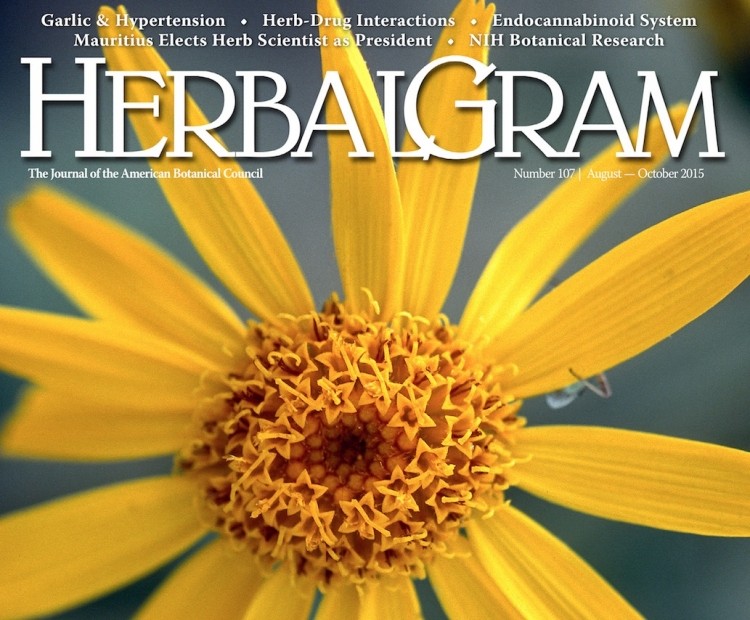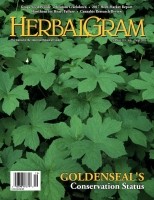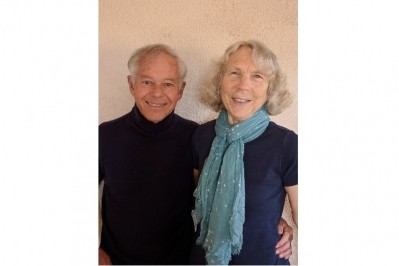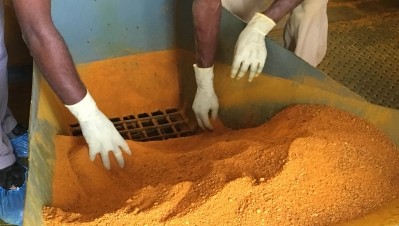At 35 year anniversary, HerbalGram represents pinnacle of herbal info world

HerbalGram is published by the American Botanical Council, a nonprofit organization that Blumenthal also founded to house the journal. It was a risk at the time but proved to be the right move.
“In the first five years HerbalGram operated under the aegis of the then newly founded American Herbal Products Association and the Herbal Research Foundation,” Blumenthal told NutraIngredients-USA.
Non profit decision paid off
Blumenthal then decided that gifting the journal to a non profit created to publish it was the way to go. But not everyone agreed.
“I had my lawyer and my accountant telling me, if you do this, there is no equity,” he said. “They said, you can start something else, but you can’t turn this back into a for-profit entity.”
From a humble beginning, HerbalGram has grown to be a periodical with a world wide reputation for quality and integrity. A lot of that has to do with its non profit roots, Blumenthal said.
“As a non profit it could afford to publish HerbalGram at a loss. It was a way to create a platform that was independent of any undue pressure from industry sources,” he said. “I think it was worked extremely well. It’s still here, after all.”
When HerbalGram was first created, there was nothing else like it in the North American market, Blumenthal said. It was not like today, when the issue has become too much information, rather than not enough.
“It was designed at first to be a newsletter to report on research news, regulatory news and what was happening in the market. You have to remember, this was before the Internet, e-mail and almost before we had fax machines,” Blumenthal said.
“There are a lot of people who don’t remember anything pre Internet or pre e-mail any more. There wasn’t a lot of information available about the emerging research, especially the important early research that was taking place in Europe. It’s not like today when you can find this stuff in minutes with an Internet search or a search on PubMed,” he said.
“I wanted HerbalGram to be the Scientific American of the botanical world. That was my model. I thought it had to be peer reviewed so as to lend credibility,” he said
Peer review key to success
Blumenthal said the peer reviewed aspect of the journal was a key part of its success. When he started compiling information on botanicals, much of it was of dubious quality.
“HerbalGram is about responsible reporting about herbs. One of the things that used to irk me is that much folkloric information used to be repeated without any critical evaluation whatsoever. We document all of our sources—some people might say we do this too much—to show where the information comes from. We have helped increase awareness that there is a legitimate side to this industry,” Blumenthal said.
Beauty had to be part of presentation
In the early newsletter days, HerbalGram was a crudely photocopied publication. That changed significantly over the years. The publication couldn’t just be about information, Blumenthal said. It had to be about beauty, too.
“We were very fortunate to associate early on with Stephen Foster, who is one of the world’s foremost photographers of botanicals,” Blumenthal said.
“It’s not just information, it had to be visual information. I knew it had to be in color. I thought there was a need to show the ornamental, esthetic beauty of many of these plants that were used as medicines,” he said.
“Their colors. Their beauty. Their tastes. People have to realize the morphology and beauty of these plants is part of what inspired people to interact with them in the first place,” he said.
After coming under the umbrella of ABC, which Blumenthal co-founded with the late James A Duke, PhD and Norman Farnsworth, PhD, HerbalGram transitioned in 1998 into a glossy, four-color printed version resembling the modern edition. The publication reached its current length of 82 pages in 1999.
HerbalGram reaches thousands of readers in more than 81 countries who represent a range of diverse professions, from research scientists (e.g., pharmacognosists, ethnobotanists, etc.) and health practitioners (e.g., herbalists, naturopathic physicians, pharmacists, conventional physicians, etc.) to industry members, government regulators, and many others.
HerbalGram has been a leader in presenting extensive literature reviews on specific herbs in an effort to help establish a scientific basis for their potential health benefits. In some cases, these reviews can also help clarify erroneous or inappropriate claims about the uses of the herbs.
UNPA tribute
Loren Israelsen, president of the United Natural Products Alliance, has been a loyal HerbalGram reader for years. The journal’s importance to the industry cannot be understated, he said.
“HerbalGram’s contribution to the body of botanical literature is extraordinary. First published in the summer of 1983, and 117 issues later, HerbalGram has become the definitive history of our modern botanical journey told through the lens of science, folklore, regulation, biography, and photography. Under the watchful eye of Mark Blumenthal and the HerbalGram staff, hundreds of authors have documented our progress from near extinction to a multi-billion-dollar industry,” Israelsen said.
“But, more importantly, HerbalGram has preserved the most rigorous standards of peer review, journalistic excellence, and diversity of viewpoints. And over 35 years, HerbalGram has touched many hearts by publishing in-memorium tributes about those who have done so much to lay the groundwork for those who followed. When my HerbalGram arrives in the mail, I know I will begin another journey into the wonders of the herbal kingdom.
“While I no longer save other magazines, I treasure and hold tight to my copies of HerbalGram. I, along with many others, salute the American Botanical Council and HerbalGram for its 35 years of service to the advancement of consumer, industry, and professional education, high level of professionalism, and documenting the rich history of our remarkable community,” Israelsen added.


















